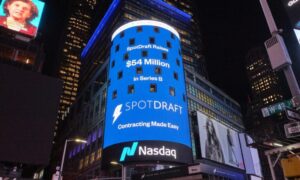Everyone is going digital today, and businesses that have multiple locations always come across unique challenges when it comes to advertising. Nowadays, traditional advertising methods may not be as effective at reaching the target audience across different locations. This is where multi-location digital advertising comes to the stage. In this ultimate guide, we will explore the strategies and best practices for leveraging digital platforms to advertise effectively across more than one location.

Going Deep into Multi-Location Digital Advertising
In this section, we will define multi-location digital advertising and discuss its significance in the modern marketing landscape.
-What is Multi-Location Digital Advertising?
Multi-location digital advertising is a dynamic and strategic approach to promoting products or services across multiple locations using a variety of digital channels and platforms. It involves tailoring marketing campaigns to specific geographic areas to reach and engage local audiences effectively.
In today’s digital age, businesses with multiple locations face the unique challenge of reaching and connecting with diverse customer bases in different regions. Multi-location digital advertising addresses this challenge by leveraging digital marketing techniques to target and resonate with local consumers.
Rather than implementing a generic, one-size-fits-all marketing approach, multi-location digital advertising acknowledges the importance of customization and localization. It recognizes that consumer preferences, behaviors, and needs can vary significantly from one location to another. By understanding these nuances and tailoring marketing efforts accordingly, businesses can maximise their impact and connect with local customers on a deeper level.
Multi-location digital advertising encompasses a range of strategies and tactics. This includes leveraging local listings and directories, such as Google My Business and online directories like Yelp and TripAdvisor, to enhance online visibility and make it easier for potential customers to find and engage with businesses at specific locations.
Another essential aspect of multi-location digital advertising is implementing hyperlocal advertising techniques. This involves geotargeting, which allows businesses to target their digital advertisements to specific geographic areas where their target audience resides. By reaching potential customers in their local vicinity, businesses can deliver highly relevant and personalised messages that are more likely to resonate and drive engagement.
Additionally, geofencing plays a significant role in hyperlocal advertising. By setting up virtual perimeters around specific locations, businesses can trigger targeted advertisements or promotions when potential customers enter or exit these defined areas. This location-based targeting enables businesses to capture immediate attention and drive foot traffic to their physical locations.
Social media platforms also play a vital role in multi-location digital advertising. Creating dedicated social media pages for each location enables businesses to engage with the local community, share location-specific content, and build a loyal customer base. Moreover, social media advertising on platforms like Facebook, Instagram, and LinkedIn offers powerful targeting capabilities, allowing businesses to reach their ideal audience based on demographics and locations.
Measuring the success of multi-location digital advertising campaigns is crucial. Key performance indicators (KPIs) such as website traffic and conversion rates help businesses evaluate the effectiveness of their marketing efforts and identify regions that are driving the most engagement and conversions.
Continuous monitoring and optimization are integral parts of multi-location digital advertising. This involves A/B testing ad variations and landing pages to identify the most effective elements. It also entails closely tracking campaign performance and making data-driven adjustments, as well as allocating budgets based on the performance of each location to optimise resource distribution and maximise results.
In summary, multi-location digital advertising is a comprehensive and targeted approach that enables businesses to effectively promote their offerings across multiple locations. By tailoring marketing campaigns to specific geographic areas and leveraging digital channels and platforms, businesses can connect with local audiences, increase brand visibility, and drive meaningful engagement and conversions.
-The Significance of Multi-Location Digital Advertising
Multi-location digital advertising holds significant importance in today’s digital landscape. It offers businesses two crucial benefits: targeted advertising and increased reach. Let’s delve into these aspects in more detail.
Targeted Advertising:
One of the key advantages of multi-location digital advertising is the ability to target marketing efforts based on specific locations. This targeted approach ensures that marketing messages are highly relevant and resonate with the local audience. By tailoring advertisements to the preferences, interests, and cultural nuances of each location, businesses can increase their chances of capturing the attention and engagement of potential customers.
Through platforms like Google Ads and Facebook Ads, businesses can utilise robust geotargeting capabilities to focus their advertising efforts on areas where their target audience resides. This level of precision allows for more effective targeting, as ads can be tailored to local demographics, behaviors, and preferences. By speaking directly to the local audience’s needs and interests, businesses can establish a deeper connection, foster trust, and drive higher engagement and conversions.
Increased Reach:
Multi-location digital advertising enables businesses to expand their reach beyond conventional boundaries. Digital platforms provide a powerful means to connect with potential customers in different locations, regardless of physical distance. This opens up new opportunities for growth and market expansion.
Through digital channels, businesses can overcome geographical limitations and access a wider audience. They can reach potential customers who may not have been aware of their offerings otherwise. Whether it’s targeting a specific neighbourhood, city, or even a different country, multi-location digital advertising allows businesses to tap into new markets and extend their brand’s visibility and influence.
Furthermore, the reach of multi-location digital advertising is not confined to a single channel. Businesses can leverage various digital platforms and channels, such as social media, search engines, display advertising, and email marketing, to connect with potential customers in diverse locations. This omnichannel approach maximises the exposure and impact of marketing messages, increasing the likelihood of reaching and engaging with a broader audience.
Essential Digital Advertising Techniques.
We’ll delve into the crucial tactics for effective multi-location digital advertising in this section.
-Localising Your Content
First of all, as a marketer, you should understand the business’s local preferences: how to optimise your content for local search and engage with your target audience effectively. By researching and understanding these nuances, businesses can tailor their content to resonate with the local audience.
The second very important part is to go deep into localised keywords: Incorporating location-specific keywords in your digital content, including website copy, blog posts, and advertisements, helps improve search engine optimization (SEO) and ensures your content appears in local search results.
-Utilising Local Listings and Directories
One of the key strategies for successful multi-location digital advertising is utilising local listings and directories. These platforms play a crucial role in enhancing your online visibility and making it easier for potential customers to find your business when searching locally.
Google My Business:
Setting up and optimising your Google My Business listings for each location is essential. Google is the most popular search engine, and having a well-optimised Google My Business profile can significantly improve your local online presence. When users search for businesses or services in their local area, Google My Business listings appear prominently in the search results. By ensuring your listings are complete, accurate, and up-to-date, you increase your chances of appearing in relevant searches. Include essential information such as your business address, phone number, website, opening hours, and customer reviews. Regularly update your listings with photos, posts, and promotions to engage with potential customers and demonstrate your active presence.
Online Directories:
In addition to Google My Business, listing your business in relevant online directories further boosts your local online visibility. Platforms like Yelp, TripAdvisor, and Yellow Pages are popular directories where consumers often search for businesses and services. By creating profiles on these directories and providing accurate information about your multiple locations, you increase the chances of potential customers discovering your business. When listing your business, ensure that your details are consistent across all directories to avoid confusion and improve your credibility. Encourage satisfied customers to leave reviews on these platforms, as positive reviews can significantly impact your reputation and attract new customers.
By utilising local listings and directories, you expand your online reach and increase your chances of being discovered by potential customers in each location. These platforms serve as valuable resources for local consumers seeking products or services, and by maintaining an active presence and positive reputation, you can establish trust and credibility among your target audience.
Remember to regularly monitor your listings and respond to customer reviews and inquiries promptly. Engaging with customers on these platforms demonstrates your commitment to customer satisfaction and can encourage loyalty and positive word-of-mouth referrals. Keep an eye on any changes or updates to these platforms’ features and algorithms, as staying informed will help you optimise your presence and make the most of these digital marketing opportunities.
-Implementing Hyperlocal Advertising
Hyperlocal advertising is a powerful strategy in multi-location digital advertising. It involves two key techniques: geotargeting and geofencing.
Geotargeting: With platforms like Google Ads and Facebook Ads, businesses can target digital advertisements to specific geographic areas where their target audience resides. This ensures that marketing messages are relevant and resonate with the local audience.
Geofencing: Geofencing allows businesses to set up virtual perimeters around specific locations. By triggering targeted advertisements or promotions when potential customers enter or exit these defined areas, businesses can drive immediate engagement and increase footfall.
These hyperlocal advertising techniques enable businesses to deliver highly targeted and contextually relevant ads, maximising campaign effectiveness and driving higher engagement and conversion rates. Regular monitoring and optimization based on data-driven insights are crucial for ongoing success.
-Leveraging Social Media Platforms
Social media platforms have become integral to digital advertising strategies, especially for businesses with multiple locations. By leveraging social media, businesses can connect with their target audience, build brand loyalty, and drive meaningful engagement. There are two key aspects to consider when leveraging social media platforms for multi-location digital advertising: creating localised social media pages and utilising social media advertising.
Localised Social Media Pages:
Creating dedicated social media pages for each location is a powerful way to engage with the local community and establish a strong presence in each area. These pages allow businesses to share location-specific content, promotions, events, and updates that resonate with the local audience. By tailoring your social media content to each location’s interests and preferences, you can foster a sense of community, encourage local customers to engage with your brand, and build a loyal customer base. Interact with followers by responding to comments, addressing inquiries, and showcasing customer experiences. Through localised social media pages, businesses can humanise their brand and establish a deeper connection with customers in each location.
Social Media Advertising:
Platforms like Facebook, Instagram, and LinkedIn offer powerful advertising tools that allow businesses to target specific demographics and locations. Social media advertising provides businesses with the opportunity to reach their target audience effectively. These platforms offer sophisticated targeting options, including location-based targeting, demographic targeting, and interest-based targeting. By utilising these tools, businesses can ensure that their advertisements are shown to the right people in each location. Social media advertising also allows for creative and visually appealing ad formats, such as image ads, video ads, and carousel ads, enabling businesses to engage and captivate their target audience. Regularly monitor the performance of your social media ads, adjust targeting parameters as needed, and optimise your campaigns based on key metrics such as reach, engagement, and conversions.
By leveraging social media platforms, businesses can effectively engage with the local community, share location-specific content, and target their ideal audience. Localised social media pages create a sense of connection and community, while social media advertising provides a targeted and impactful way to reach potential customers. Be consistent in your social media efforts, regularly post engaging content, and interact with your audience to foster brand loyalty and drive business growth.
Remember, social media is an ever-evolving landscape, so stay informed about platform updates, emerging trends, and changes in algorithms. By staying adaptable and embracing new features and opportunities, businesses can maximise the benefits of social media for multi-location digital advertising.
Measuring Success and Optimising Campaigns
In this section, we will explore how to measure the success of multi-location digital advertising campaigns and optimise them for better results.
-Key Performance Indicators (KPIs)
Website Traffic:
Tracking website traffic is essential to evaluating the success of your digital marketing initiatives. By analysing the regions that are driving the most visitors to your website, you can identify which locations are responding well to your advertising efforts. Monitoring website traffic provides valuable insights into the effectiveness of your campaigns and helps you make data-driven decisions for future optimizations.
Conversion Rates:
Measuring conversion rates allows you to assess how well your advertising campaigns are performing in terms of driving desired actions from your audience. Whether it’s making a purchase, completing a contact form, or subscribing to a newsletter, monitoring conversion rates helps you gauge the effectiveness of your ads in generating meaningful engagements. By tracking conversion rates by location, you can identify areas where your campaigns are resonating the most and allocate resources accordingly.
-Ad Variations and A/B Testing:
Ad Variations:
Creating multiple versions of your advertisements is crucial to understanding which elements are most effective in capturing your audience’s attention. Through A/B testing, you can experiment with different ad copies, images, and call-to-action buttons to determine the best-performing combinations. By systematically testing variations and comparing their performance, you can optimise your campaigns for maximum impact and improve overall engagement and conversion rates.
Landing Page Optimization:
A/B testing is not limited to advertisements; it can also be applied to landing pages. Testing different layouts, headlines, and content on your landing pages allows you to identify the most efficient combinations that increase conversion rates. By continuously refining and improving your landing pages based on A/B testing results, you can enhance the user experience and drive better campaign outcomes.
-Continuous Monitoring and Optimization:
Campaign Performance Tracking:
Continuously monitoring the performance of your advertising campaigns is essential for ongoing success. Analyse key metrics such as click-through rates, engagement rates, and conversion rates to identify areas that require improvement. By closely monitoring campaign performance, you can quickly identify trends, spot underperforming locations, and make data-driven adjustments to optimise your campaigns further.
Budget Allocation:
Allocate your advertising budget based on the performance of each location. By focusing more resources on locations that generate better results, you can maximise your return on investment. Consider adjusting budgets for underperforming areas or experimenting with different strategies to improve their performance. Regularly reassess your budget allocation to ensure optimal resource distribution and campaign effectiveness.
By effectively measuring the success of your multi-location digital advertising campaigns and continuously optimising them based on data-driven insights, you can drive better results and achieve higher returns on your advertising investments. Remember, success is a continuous process, and staying agile, adaptable, and open to experimentation is key to long-term success in the dynamic digital advertising landscape.
Conclusion
Multi-location digital advertising presents a tremendous opportunity for businesses with multiple locations to connect with their target audience effectively. By implementing the strategies outlined in this ultimate guide, you can optimise your digital advertising campaigns, increase your reach, and drive meaningful results across all your locations. Stay agile, continuously monitor performance, and adapt your strategies to ensure long-term success in the ever-evolving digital landscape.


































